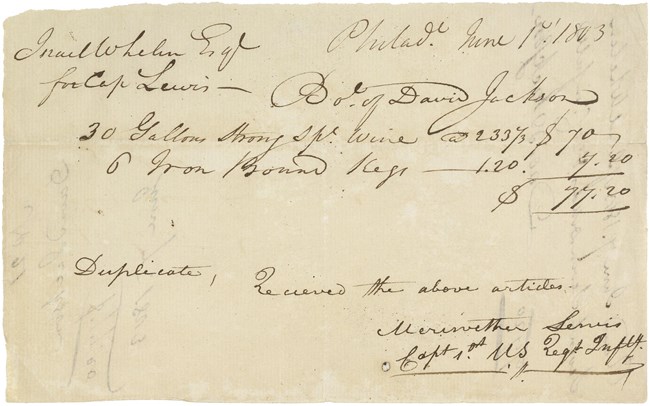Last updated: January 29, 2019
Article
Alcohol and the Lewis and Clark Expedition

On his original list of goods needed for the Expedition, Lewis used the term “rectified spirits.” But what he actually purchased was labeled as “Strong Sp. Wine.” What exactly was this?
According to Leandra Zim Holland in her book, “Feasting and Fasting with Lewis and Clark,” she explains that “Strong Sp. Wine” could have been brandy – made from grapes first fermented into wine, its alcohol content was then increased by distillation.
The purchase was made from David Jackson, a Philadelphia druggist, so we can suppose that it could have been brandy, a long-used medicine, relief and refresher sold by druggists of the time.
Lewis would later, in St. Louis, buy whiskey for the journey.

Photo: Creative Commons
In 1790, drinking-age Americans consumed an average of 5.8 gallons of pure alcohol annually, according to the PBS.org online article, “7 things you didn’t know about alcohol in America.”
Derek Brown, chief spirits advisor for the National Archives, says that by 1830 that number had risen to 7.1 gallons. That’s a lot, considering that Americans today drink on average 2.5 gallons a year, according to the World Health Organization.
At the time, alcohol was viewed as a digestive aid and a source of strength. With no standard water treatment system in the U.S., some considered it an alternative to water. “For some people, it was because water was poisonous in the sense that it had all kinds of bacteria they didn’t quite understand,” Brown said.
The first definition of a “cocktail” came in 1806 when a newspaper in Hudson, New York answered a reader’s question, “What is a cocktail?” The editor wrote, “A drink comprised of sugar, water, bitters and ‘spirits of any kind.’” He continued, “It is vulgarly called ‘bittered sling,’ and is supposed to be an excellent electioneering potion, in as much as it renders the heart stout and bold, at the same time that it fuddles the head.”
